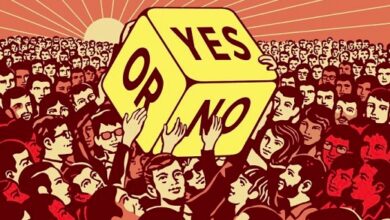What is Domestication Origin history and Impact
Domestication
The meaning of domestication is directly related to the continuous conditioning of a species to human coexistence. In this way, there are a number of animal and plant species that have gone through and still go through this process, since millennia ago.
From Latin, “domus” means “house”, while “domesticus” means “to bring home”. Not coincidentally, the domestication of animals began in the Neolithic period, when human beings stopped being nomads and began to set down their roots in specific places.
From there, about 20 thousand years ago, the process of domestication of fauna and flora began, starting with our beloved dogs. At that time, they were still wolves, who took advantage of the leftovers of human food to feed themselves.
Origin of Domestication
After the Ice Age, forests gradually expanded over the large steppes, causing the migration and/or extinction of some species of animals. In many cases, they were species that constituted an essential part of man’s diet. Human groups, until then hunter-gatherers, had to adapt to this transformation in order to maintain their subsistence. Men fanned out into small groups that began to be semi-sedentary using stationary housing. Some theories claim that in their continuous coming and going, the hunters who threw the seeds of the consumed fruits could see that, under suitable conditions, these generated new plants. The result of this transformation is the beginning of the Neolithic period.
There was a period when plants and animals were domesticated and it lasted 15 centuries. The term Neolithic, cited by the British naturalist John Lubbock in 1865, derives from the Greek neo “new” and lithos “stone”, referring to the human ability to polish the stone, in contrast to its size, typical of the Paleolithic period. The application of this new activity interacted with a series of characteristics that could cause a radical change in the forms of human culture; one of them represents a phenomenon that led many specialists to consider a “Neolithic Revolution”: the domestication of plants and animals.
History
There is no specific point at which human beings decided they were going to start domesticating animals. This was a gradual process: from the moment our civilizations began to be born in the Fertile Crescent area, between the Tigris and Euphrates rivers.
In this way, it can be said that domestication began as a logistical issue. Wolves, for example, sought out areas inhabited by humans for food, while humans kept the tamer wolves close by to help with everyday tasks.
Thus, as the centuries passed, these wolves that were specially chosen by humans began to breed, creating new generations with increasingly domestic and less wild characteristics. Thus, dogs and different breeds appeared , according to different human needs.
The domestication of farm animals began a little later than that of wolves, about 10,000 years ago, with goats and sheep. Then came oxen, pigs, donkeys, horses, etc. across the globe.
Even as more and more species became domesticated animals , some were still beyond human reach. And they continue – the vast majority of animals are not and never will be domesticated, and there is an explanation for this fact.
What species can be domesticated
As you will notice, even millennia after we learned how to domesticate animals, there are still a number of wild animals. These animals are even commonly prohibited by law from being domesticated. Why can’t we have all these pets at home?
There are some rules regarding which animals can be tamed :
- they must be sociable;
- they must have lost their ancestral wild instinct;
- are capable of breeding in captivity;
- they must have a specialized function;
- need to adapt to environments easily.
If a species has all five, it can be considered domesticated. It is important to point out here that an animal that presents only some of these characteristics is not domestic, and yes, most of the time, it has been conditioned to that situation.
The impact of domestication
It’s no small thing to say that your pet changed your life, isn’t it? The impact that the domestication of animals has had on human health , on our habits and on our ways of living together is gigantic. So much so that today these animals are even used to help with therapeutic treatments.
In addition, the domestication of animals (and plants) was also a great foundation for the construction of civilizations as we know them today. Our cities could grow more easily, at the same time, political dominance and the advancement of new epidemic diseases also began to emerge.
The impact wasn’t just felt by humans. The animals were also changing as the domestication of the species evolved. Scientific studies demonstrate that some of the most significant changes that domesticated mammals have undergone are:
- more varied coat coloration;
- more docile behavior;
- decreased brain size;
- early maturation;
- paedomorphosis.
Thus, it was years of history that united and transformed both us humans and the other animals that are part of our coexistence. It’s a series of behaviors that created new species that are now our best friends.

